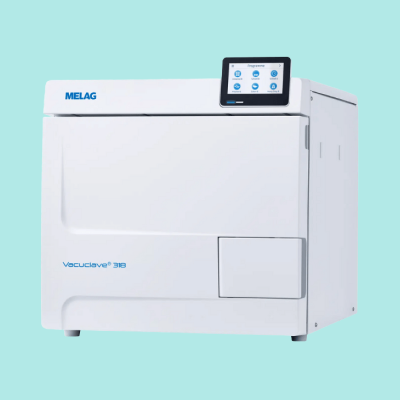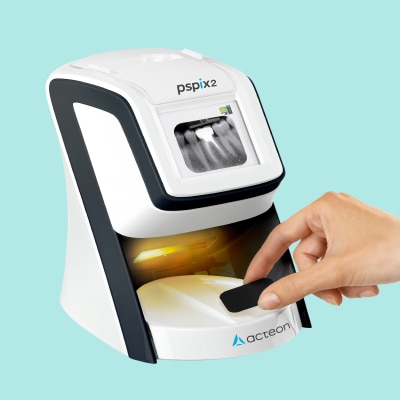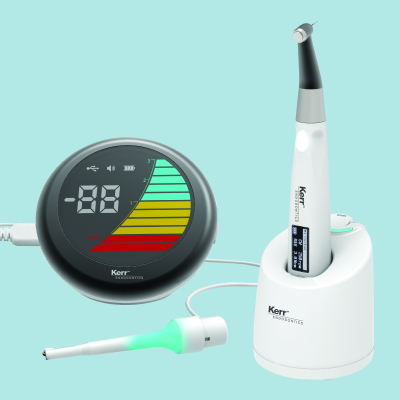In restorative dentistry, the LED curing light is one of the most critical pieces of equipment you will have in your practice. But with the amount of new composites coming to market, the importance of the curing light in the polymerisation process can sometimes get lost.
LED curing lights should not be underestimated. They can be the difference between a quick patient recall and a restoration that lasts decades. Here are a few suggestions to improve the overall efficiency of your curing procedures.
Find a Good Irradiance
One of the key features of a curing light is its irradiance, also known as output power or light intensity.
Measured in milliwatts per square centimetre (mW/cm2), irradiance is the amount of light that the curing light can produce.
To understand what irradiance values are most desirable, experts have recommended 500-2000 mW/cm2 with an absolute minimum of 400 mW/cm2 and absolute maximum of 4000 mW/cm.
Light intensity which is too low can lead to an incomplete cure and a host of complications, such as fracture and de-bonding.
Irradiance that is excessively high can risk heat damage and post-op sensitivity.
With the right technique, most composites can be fully cured in up to 10 seconds with a light intensity of +1000mw/cm2, according to manufacturers such as BA and Ivoclar.
Regularly Test Your Curing Light
To ensure your curing light irradiance is adequate, it is important to frequently test your light with a radiometer.
Failure to do this can cause problems such as material discolouring, de-bonding from the tooth structure, microleakage, higher risk of fractures leading to cases of postoperative sensitivity and secondary decay.
Digital radiometers accurately measure curing light intensity in mW/cm² and instantly shows the current value on a screen.
Regular testing allows you to know for certain what your curing light’s output will be, which will then allow you to better determine how long to cure a specific material.
Be on the Same Wavelength as Your Composite
It is essential that the wavelength of the curing light being used is compatible with the photoinitiator used in your restorative material.
Even the slightest variation between composite and wavelength compatibly can affect polymerisation and restoration longevity.
Wavelengths are measured in nanometres (nm). LED curing lights tend to have a spectrum range of either 440nm - 490nm or a broader range of 390nm - 490nm. Most composites are activated by light emitted at around 468 nm. Other composites require initiation in the 429 nm range.
Find the right balance between quality and price
A simple definition of CAD/CAM dentistry is the use of digital software to design and manufacture dental restorations and prostheses. CAD stands for computer-aided design and CAM stands for computer-aided manufacturing. The technology can be used to create crowns, dentures, inlays, onlays, bridges and veneers among other things. The speed of the CAD/CAM process allows for dental prosthetics to be designed, manufactured and delivered to the patient in quick time, sometimes the same day. The wider system of using computer assisted technologies to produce restorations is known as CEREC (Chairside Economical Restoration of Aesthetic Ceramics).
Safeguard Your Purchase
Another reason why it’s important to purchase from a reputable brand is to ensure that should anything go wrong with your device, that that same brand will on hand to repair it promptly.
BA International, the manufacturer of the Optima BASE200, repair a huge array of small equipment devices including curing lights. In fact, BA is now Europe’s largest repair house.
More than 100,000 dentists around the world use BA International branded handpieces and small equipment.
Kent Express recommends
BA Optima Curing Light BASE200
Entry-level curing light with a lightweight, compact and efficient design.
- Powerful light intensity of +1000mW/cm2
- Wavelength range: 420-490Nm
- 3 different curing times available: 5, 10 and 15 seconds
- Inbuilt battery with micro-USB charging port
- Allows curing of most composites in up to 10 seconds
- Affordable price
Kent Express recommends
BA Optima Curing Light BASE200
Entry-level curing light with a lightweight, compact and efficient design.
- Powerful light intensity of +1000mW/cm2
- Wavelength range: 420-490Nm
- 3 different curing times available: 5, 10 and 15 seconds
- Inbuilt battery with micro-USB charging port
- Allows curing of most composites in up to 10 seconds
- Affordable price














